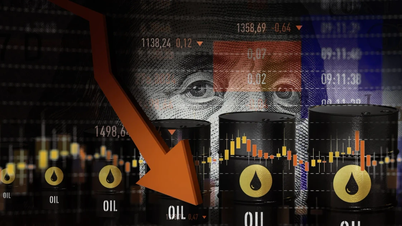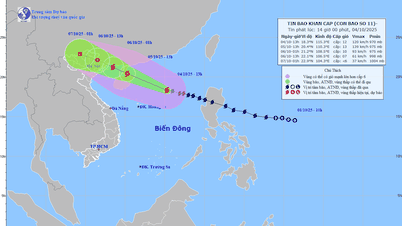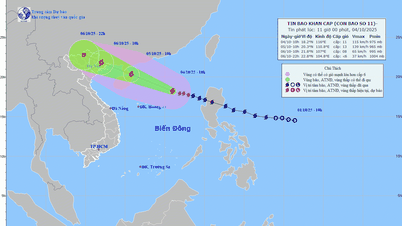
Brent crude futures closed up 42 cents, or 0.7 percent, at $64.53 a barrel on October 3, while U.S. West Texas Intermediate (WTI) crude rose 40 cents, or 0.7 percent, to $60.88 a barrel.
Oil prices plunged 3% in the first session of the week on September 29, as the prospect of increased global supply put pressure on "black gold". Brent crude oil prices fell by 2.16 USD (equivalent to 3.1%) to close at 67.97 USD/barrel, while WTI crude oil prices also fell 2.27 USD (3.45%) to 63.45 USD/barrel.
Oil prices hit a 16-week low on October 1 as the US government shutdown raised concerns about the global economic outlook, while the market also forecasted an increase in oil supply in the coming time. Brent crude oil prices ended the session down 68 US cents, or 1%, to $65.35 a barrel. WTI crude oil prices also fell 59 cents, or 0.9%, to $61.78 a barrel. This was the lowest closing level since June 5 for Brent oil and since May 30 for WTI oil.
Oil prices closed down about 2% on October 2 to a four-month low, marking the fourth consecutive session of decline, due to concerns about oversupply in the market ahead of the OPEC+ meeting at the end of the week. Brent crude fell $1.24, or 1.9%, to $64.11 a barrel, its lowest level since June 2. WTI crude fell $1.30, or 2.1%, to $60.48 a barrel, its lowest level since May 30.
For the week, Brent crude fell 8.1%, while WTI crude fell 7.4% for the week.
Dennis Kissler, vice president of trading at BOK Financial, said the prospect of increased OPEC+ production and the restart of the Iraq/Kurdish pipeline after a two-year shutdown are keeping sellers on the sidelines. Hamas is also beginning talks with the Trump administration on a peace plan for the Gaza Strip. In addition, IEA oil inventory data earlier this week suggested oil prices are unlikely to rise in the short term.
The group's eight members are likely to continue accelerating oil output increases at a meeting on October 5, with leader Saudi Arabia pushing for a sharp increase to regain market share and Russia proposing a more modest increase, four sources familiar with the OPEC+ talks said.
Analysts say that increased OPEC+ supply and slowing global refinery activity due to maintenance and seasonal demand declines in the coming months will weigh on sentiment. JPMorgan analysts believe September 2025 marks a turning point, with the oil market heading for a significant surplus in the fourth quarter of 2025 and into next year.
Iraq's oil ministry said earlier this week that a pipeline from the semi-autonomous Kurdistan region in northern Iraq to Türkiye would begin on September 27 for the first time in two and a half years. Meanwhile, the US president has given Hamas until the evening of October 5 to agree to his proposal to end the conflict in the Gaza Strip. In the US, the EIA reported on October 1 that the country's crude, gasoline and distillate inventories rose last week due to refining activity and falling demand.
Source: https://baotintuc.vn/thi-truong-tien-te/gia-dau-the-gioi-tuan-qua-giam-manh-nhat-trong-hon-3-thang-20251004093619223.htm


![[Photo] Bustling Mid-Autumn Festival at the Museum of Ethnology](https://vphoto.vietnam.vn/thumb/1200x675/vietnam/resource/IMAGE/2025/10/4/da8d5927734d4ca58e3eced14bc435a3)

![[Photo] General Secretary To Lam attends the 8th Congress of the Central Public Security Party Committee](https://vphoto.vietnam.vn/thumb/1200x675/vietnam/resource/IMAGE/2025/10/4/79fadf490f674dc483794f2d955f6045)


![[Photo] Solemn opening of the 8th Congress of the Central Public Security Party Committee, term 2025-2030](https://vphoto.vietnam.vn/thumb/1200x675/vietnam/resource/IMAGE/2025/10/4/f3b00fb779f44979809441a4dac5c7df)



























![[Infographic] Notable numbers after 3 months of "reorganizing the country"](https://vphoto.vietnam.vn/thumb/1200x675/vietnam/resource/IMAGE/2025/10/4/ce8bb72c722348e09e942d04f0dd9729)


























































Comment (0)